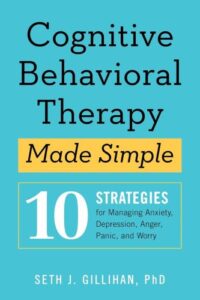
Date Published: October 16, 2001
Good to Great
Book Author: James C. Collins
Summary reviewed by:
Terrence Timmons
Terrence Timmons
Analyst
Bachelor of Arts (BA), University Of California, Santa Barbara 2019
With over 4 years of experience as an analyst. Terrence Timmons is committed to analyzing summaries without compromising on quality.
Good to Great: Summary
How do some companies make the leap from good to great while others remain stagnant? Jim Collins answers this pivotal question with a research-driven approach that’s both compelling and practical. The core thesis of "Good to Great" is that greatness is not a matter of circumstance but of conscious choice and discipline. Collins and his team embarked on a five-year study, analyzing over 1,400 companies to identify those that transitioned from good to great and sustained that greatness for at least 15 years. What they discovered is a set of common practices and characteristics that define these exceptional companies.
1) Main Thesis and Research Foundation: At the heart of "Good to Great" is the idea that great companies are built through a combination of disciplined people, thought, and action. Collins’ research, grounded in rigorous data analysis, reveals that the most successful companies didn’t rely on a single innovation or idea but on a consistent and methodical approach to leadership, strategy, and execution. The research underpinning the book is robust, involving case studies and statistical comparisons that add substantial weight to its conclusions.
2) Author's Expertise and Realistic Approach: Jim Collins, a renowned business consultant and lecturer, brings a wealth of expertise to the table. His experience and rigorous academic background lend credibility to the insights he offers. The book's approach to personal development and organizational transformation is both realistic and achievable. Collins outlines clear, actionable steps that companies can take to elevate their performance. These are not theoretical concepts but proven strategies derived from real-world examples.
3) Strategies for Growth and Practical Application: Among the key strategies Collins introduces is the "Hedgehog Concept," which encourages companies to focus on what they can be the best in the world at, what drives their economic engine, and what they are deeply passionate about. Another significant concept is the "Level 5 Leadership," where leaders demonstrate a paradoxical blend of personal humility and professional will. Collins uses the metaphor of the "Flywheel" to illustrate how consistent effort and discipline build momentum over time, leading to breakthroughs.
4) Practical Tools and Everyday Application: "Good to Great" is not just a book of ideas; it's a guidebook filled with practical tools for readers to implement. Collins provides diagnostic tools, like the "Good-to-Great Diagnostic," to help organizations assess where they stand and how to apply the principles discussed. The book also emphasizes the importance of having the right people in the right roles, fostering a culture of discipline, and confronting brutal facts without losing faith in eventual success.
In conclusion, "Good to Great" offers a roadmap for any organization—or individual—looking to achieve sustained excellence. Its blend of research, practical strategies, and actionable insights makes it a must-read for leaders committed to transforming good intentions into great results.
Good to Great: Genres
Business
Business Leadership
Business Management
Leadership
Management
Organizational Behavior
Personal Development
Success
Good to Great: Themes
- Level 5 Leadership:
The concept of Level 5 Leadership describes leaders who combine deep personal humility with intense professional will. These leaders prioritize the success of the company over personal recognition and are characterized by their resilience and quiet determination. A key instance of this is when leaders at great companies take responsibility for failures while giving credit for successes to their teams. - The Hedgehog Concept:
This theme revolves around focusing on the intersection of three circles: what you are deeply passionate about, what you can be the best in the world at, and what drives your economic engine. Companies that achieve greatness understand and commit to their Hedgehog Concept, allowing them to outperform competitors consistently. - Culture of Discipline:
Successful companies foster a culture where disciplined people engage in disciplined thought and take disciplined actions. This disciplined approach is not restrictive but liberating, as it empowers employees to innovate and perform within a well-defined framework. Companies with this culture sustain their success by aligning their actions with their core values and goals. - The Flywheel and the Doom Loop:
The Flywheel concept illustrates how sustained effort and consistent action build momentum over time, leading to significant breakthroughs. In contrast, the Doom Loop describes companies that seek quick fixes and radical changes, leading to inconsistent performance and eventual decline. The Flywheel effect is seen when companies gradually gain strength, while the Doom Loop captures the struggles of those that lack consistency and discipline. - Confronting the Brutal Facts:
Great companies are not afraid to face harsh realities. By confronting the brutal facts of their situation, they make informed decisions that guide their strategies and actions. This theme emphasizes the importance of transparency and honest assessment, leading to more effective problem-solving and long-term success.
Good to Great: Methodology
Our summaries are designed with you, the reader, in mind. By focusing on User-Focused Content & Experience, we ensure that every summary resonates with your curiosity and needs. We deliver concise, insightful content through Expert Analysis, leveraging our team's diverse expertise to distill essential themes and strategies. By prioritizing Quality and Integrity, we guarantee that every summary upholds the highest standards of accuracy and clarity, providing you with a reliable resource that not only informs but also inspires practical action.




